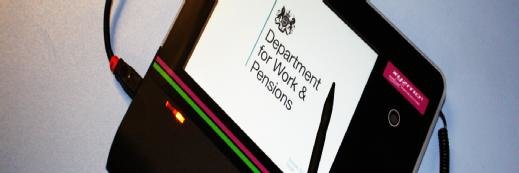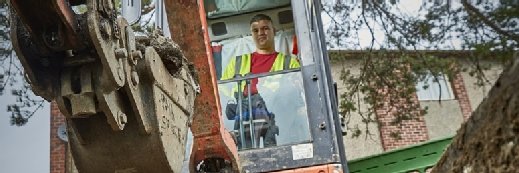
Orlando Bellini - Fotolia
Berlingske Media to go all-digital in 2023
Danish publisher moves national daily newspaper fully online as it cuts costs and reacts to changing customer habits
Berlingske Media has become the first Nordic publishing group to confirm plans to phase out the printed edition of a national daily newspaper. It is preparing to end the production of Berlingske Tidende and transition to a fully digital “newspaper” in 2023.
The decision was shaped by societal changes in Denmark regarding how the public consumes news and information in the age of digitisation and social media platforms. For Danes, the seismic shift from printed newspapers to digital platforms for news and consumer information has accelerated significantly since 2016.
The increasing presence of Nordic tech companies, such as the digital newspaper platform actor Readly, are accelerating change by offering consumers user-friendly digital platforms to access local, national and international newspapers and magazines.
For Nordic newspaper publishers, the digital transformation is taking place against the backdrop of strengthened government subsidy-based financial support that aims to help publishers, especially those producing newspapers for sparsely populated local and regional readership markets, meet core operating overheads. These include postal, distribution and digital online news maintenance costs.
The direct press and media subsidies offered to more than 1,000 Nordic national, city and local newspapers mainly comprise three forms of support: operational subsidies, distribution subsidies, and support for postal distribution in rural areas. At the end of 2021, over 90% of households in Sweden, Finland, Norway and Denmark were subscribed to so-called early-morning-delivered daily newspapers.
Denmark and Sweden lead the Nordic field as regards the amount of direct press and media subsidies paid to newspaper publishers. In 2021, Sweden paid out more than SEK1bn (€102m) in direct press and media subsidies to newspapers. A further SEK678m was paid to newspapers in operational subsidies.
In the case of Denmark, the government paid out DKK387m (€52m) to newspapers in direct subsidies for text-based news media in print and news distributed through online digital platforms. The subsidy scheme includes an innovation and project dimension that helps newspapers develop, finance and deliver online digital platforms providing local and national news.
The growing trend towards the public consuming more of their news from social media platforms is pivotal to Berlingske Media’s decision to shutter Berlingske Tidende’s printed version and switch to an all-digital newspaper, said Pernille Holbøll, the paper’s editor-in-chief.
“Berlingske Tidende has grown explosively digitally over the past four years to become the largest news media in Denmark,” said Holbøll. “As expected, newspaper circulation has fallen over the same period, and will soon become financially unsustainable. This is why we are focusing all of our efforts to enhance our presence on the digital platforms and electronic devices where consumers can be found, such as mobile telephones.”
Denmark’s largest-circulation newspaper in 2018, Berlingske Tidende saw its readership began to decline in that year, when it recorded an average of 870,000 weekly readers. The newspaper’s weekly readers dropped to 625,000 in 2019 and to 451,000 in 2020, slipping again to 366,000 by the end of 2021.
Berlingske Tidende’s transition to a digital free “newspaper” format in 2023 will run parallel to a cost reduction-focused restructuring programme – the second major shakeup in the group’s organisation in four years.
Offices will close
The digital transition will result in the closure of newspaper offices in the greater Copenhagen area and the shuttering of regional editorial offices in Aarhus, Odense and Aalborg. BT also intends to cease production of city-specific editions of the newspaper.
In 2018, Berlingske Media launched a comprehensive streamlining plan that involved closing its Copenhagen metropolitan newspaper Metroxpress’s online website, mx.dk. The plan, which also included terminating the operations of the Copenhagen city guide and business online news platforms aok.dk and business.dk, resulted in 100 job losses.
There are state-provided financial benefits for Danish publishing groups transitioning to exclusively digital newspapers. Benefits includes state subsidies and direct assistance through a variety of transformative technology innovation programmes that were introduced in 2018 under the government’s Digital Media Support Act (DSMA).
That legislation gave Danish publishers a financial support mechanism to plan and pursue ambitious digital publishing projects. It was introduced after an all-party political agreement in the Folketing, the Danish parliament, that sought to provide improved conditions for newspapers to build a stronger presence in the digital news segment.
The political agreement also ensured a better balance between state and private media. It also strengthened the range of state direct and indirect financial supports available to bolster the financial capacity of local and regional newspapers to invest in building strong digital media platforms.
Significantly, the agreement incorporated into the DMSA exempted digital news media from VAT obligations, giving digital media tax parity with printed news in Denmark.
Berlingske Tidende’s transition to a fully digital format is expected to heighten interest among other publishing groups across the Nordic countries to develop similar all-digital business models.
The changing media landscape, with more people getting their news and information from social media platforms such as Readly, means publishers will become even more forensic in their scrutiny of costs around producing printed newspapers in the face of falling numbers of subscribers and general market demand.
Earlier this month, Readly reached a strategic collaboration with Svenska Dagbladet that allows its platform subscribers to read Svenska Dagbladet digitally – a deal that gives the newspaper an extended reach to find more readers through Readly’s platform.
The collaboration gives the newspaper access to the Readly platform’s user data and advertising statistics comprising over 50 billion data points.
“Having access to Readly’s subscribers means more people can find us," said Petter Lorentzon, head of consumer business at Svenska Dagbladet. “Good journalism costs money and with Readly we have found a model that both advantages the reader and allows us to continue developing journalism in a broader digital space.”
Importantly, the deal with Readly allows Svenska Dagbladet access to data metrics, enabling the newspaper to verify the number of unique visitors, the reading time for pages, the number of clicks on advertising links, and time spent on linked websites.
Lorentzon said the added value of data metrics will help to maximise the newspaper’s engagement and advertising strategy in the digital space. “In the long run, we believe the collaboration with Readly will lead to even more people signing up for a subscription to Svenska Dagbladet,” he said.









